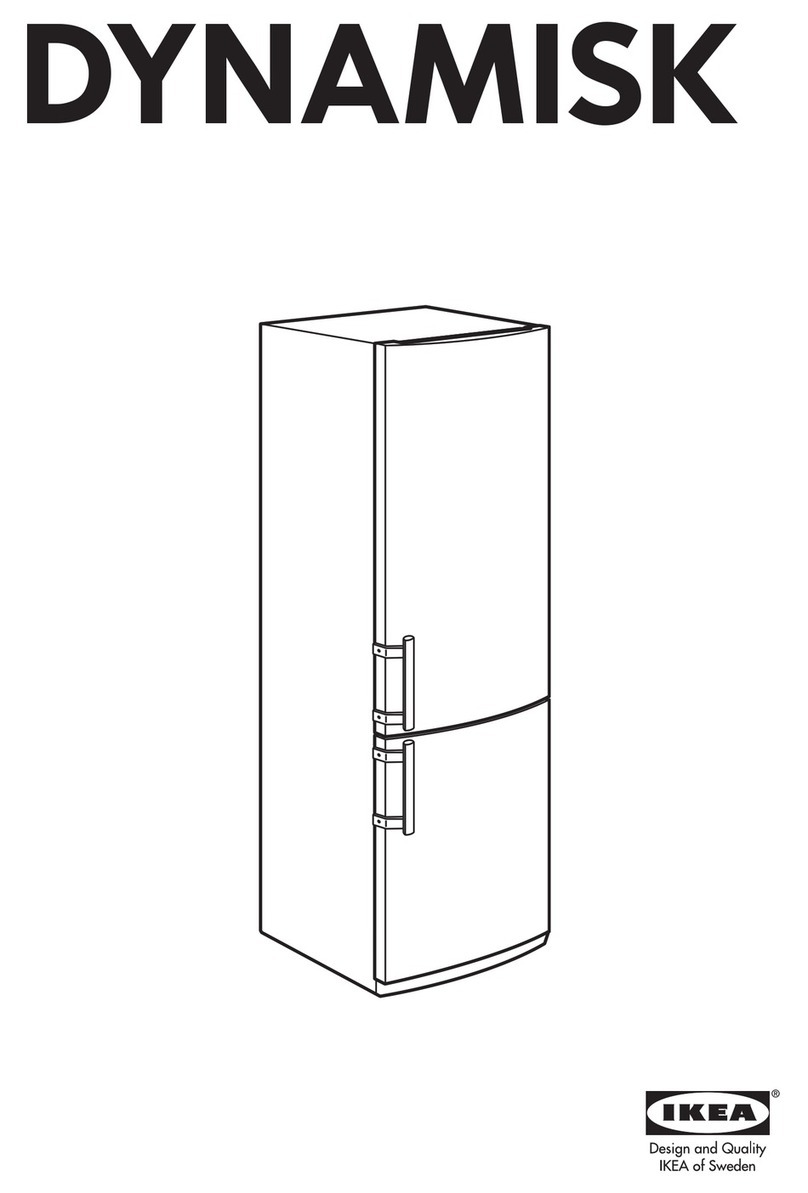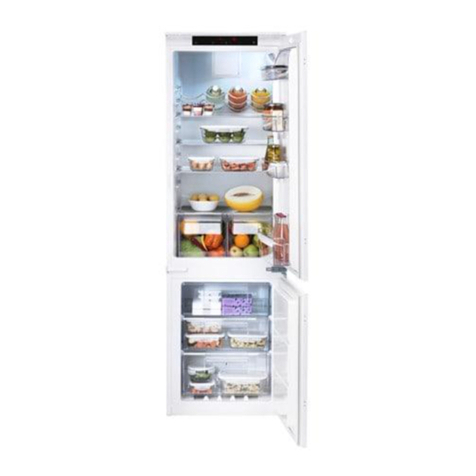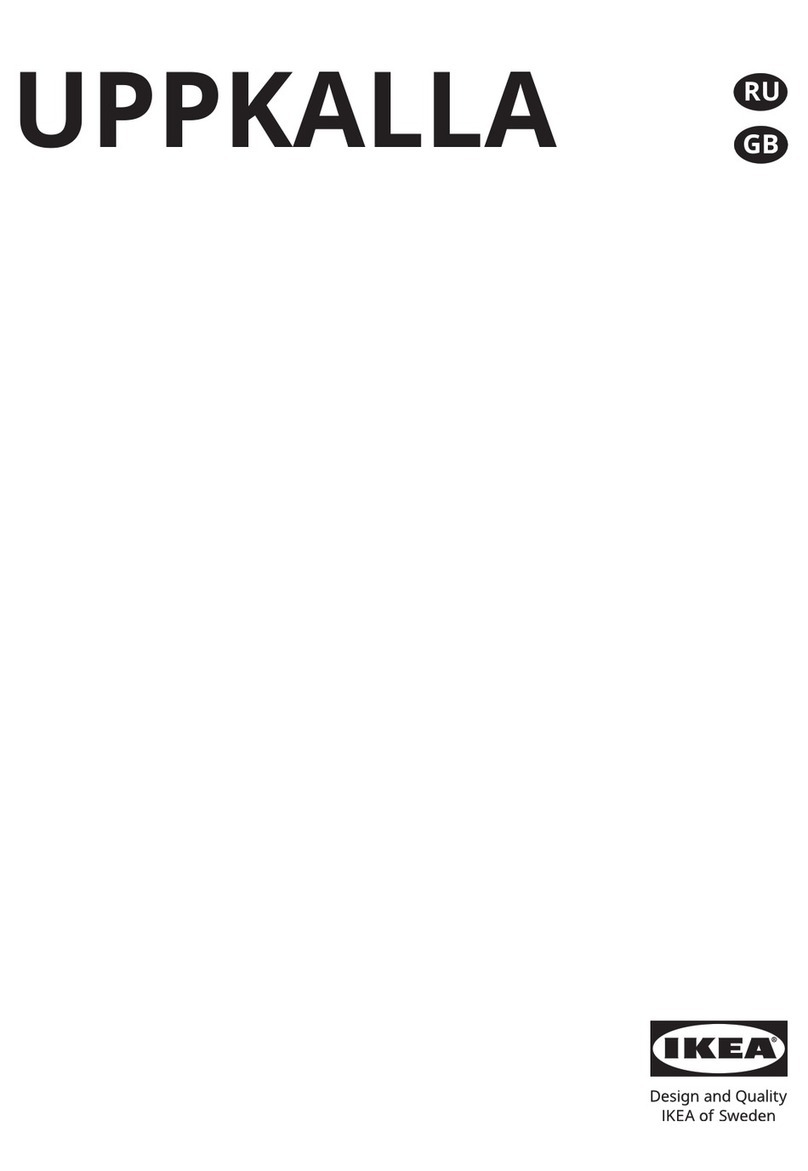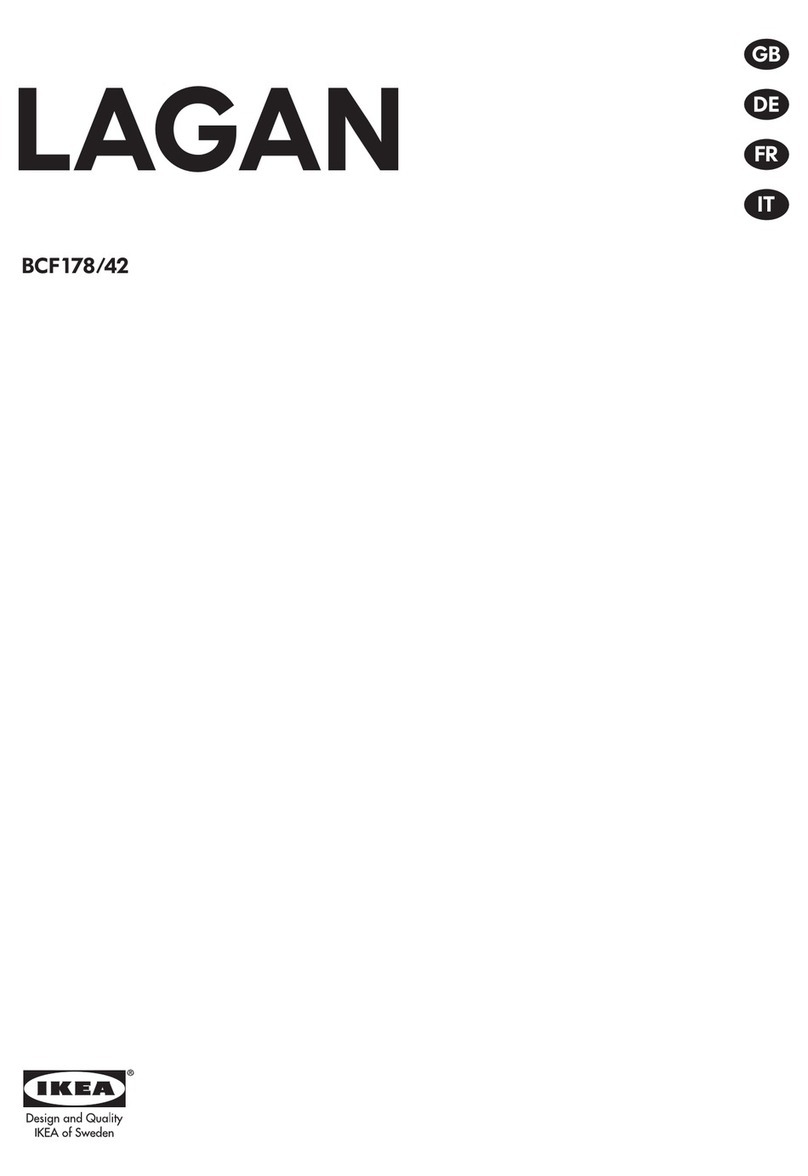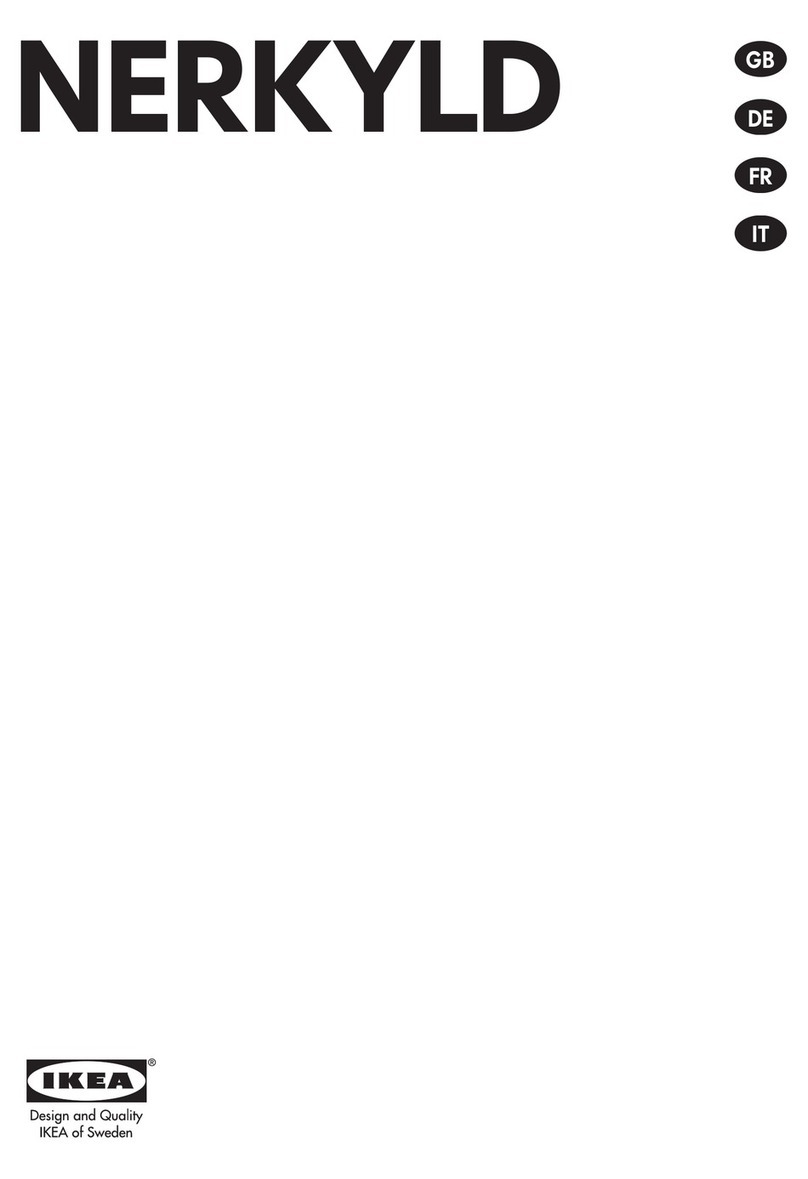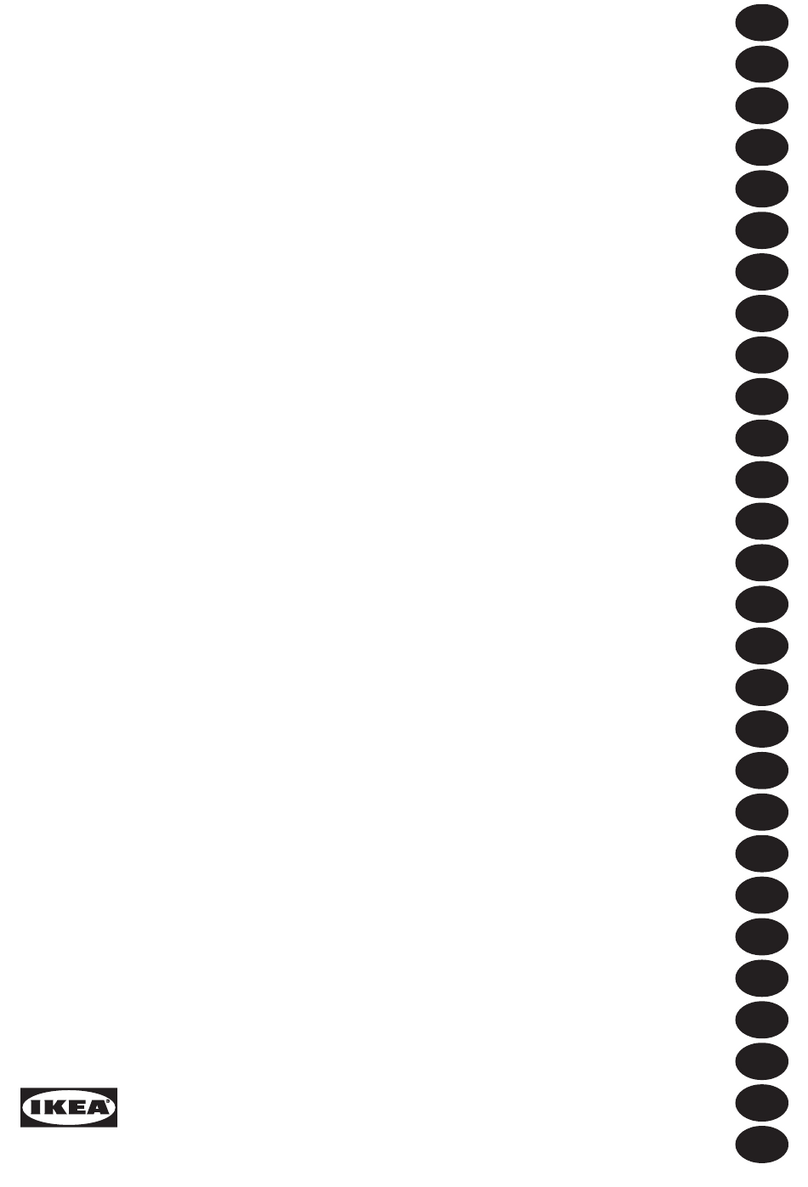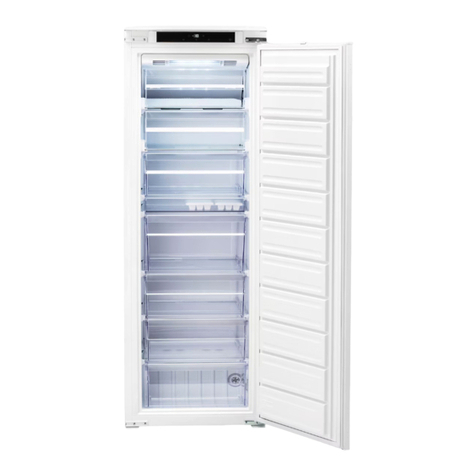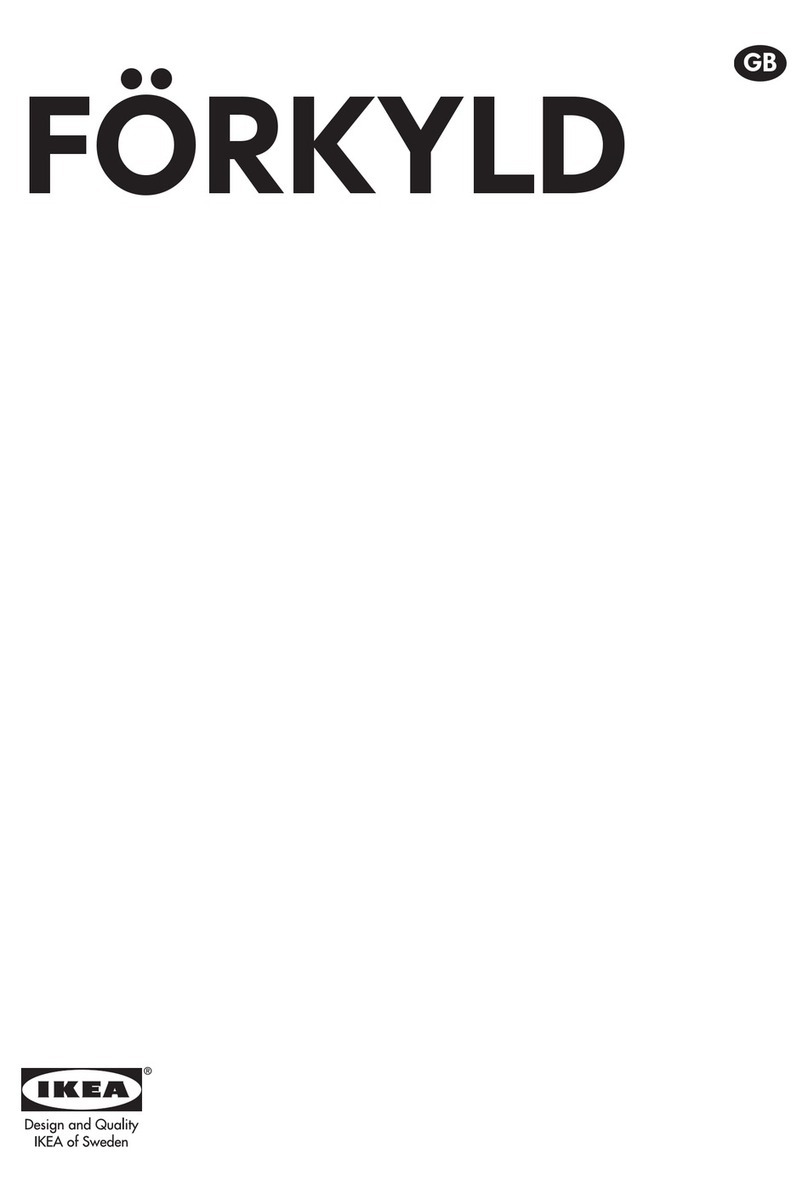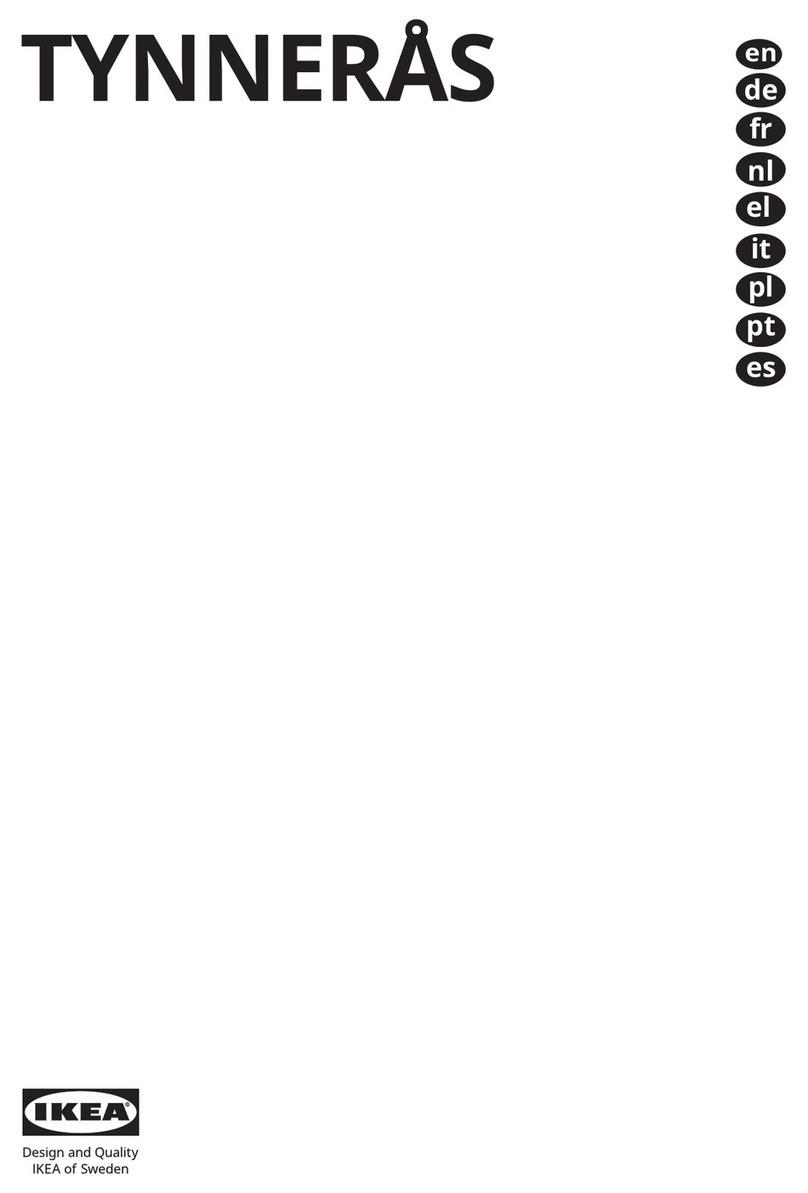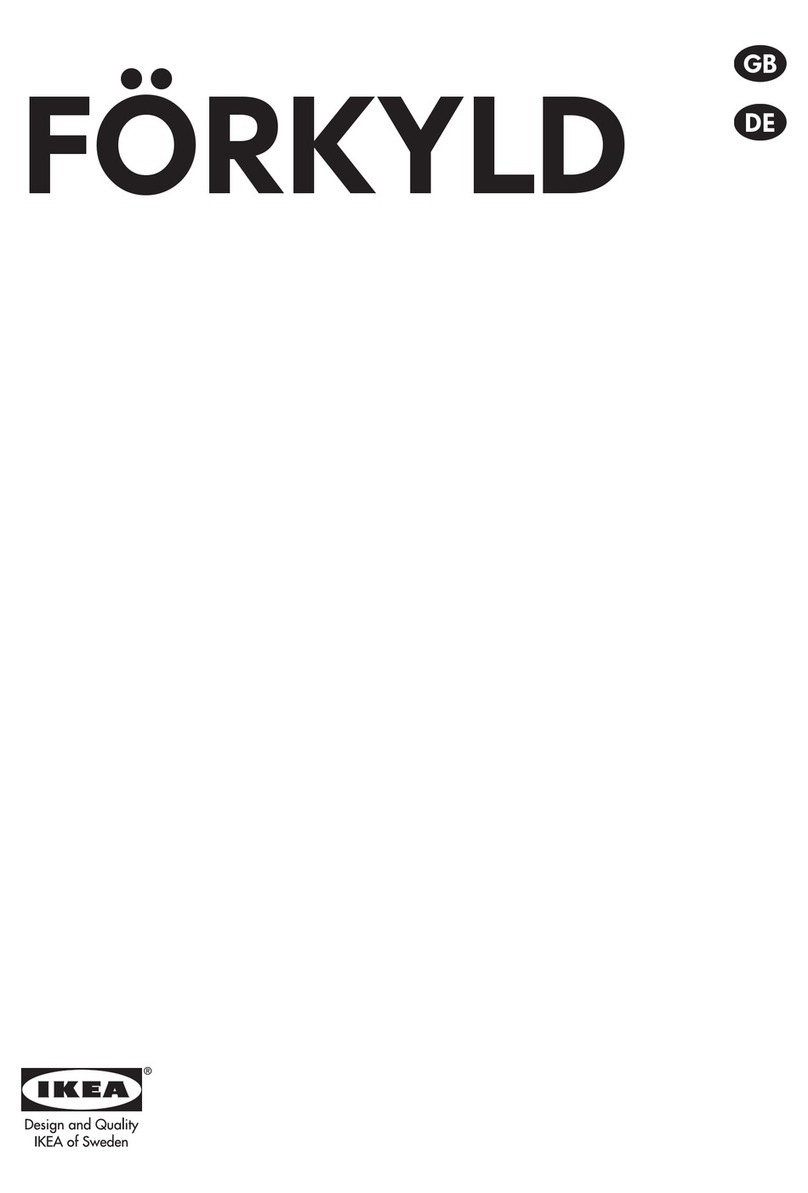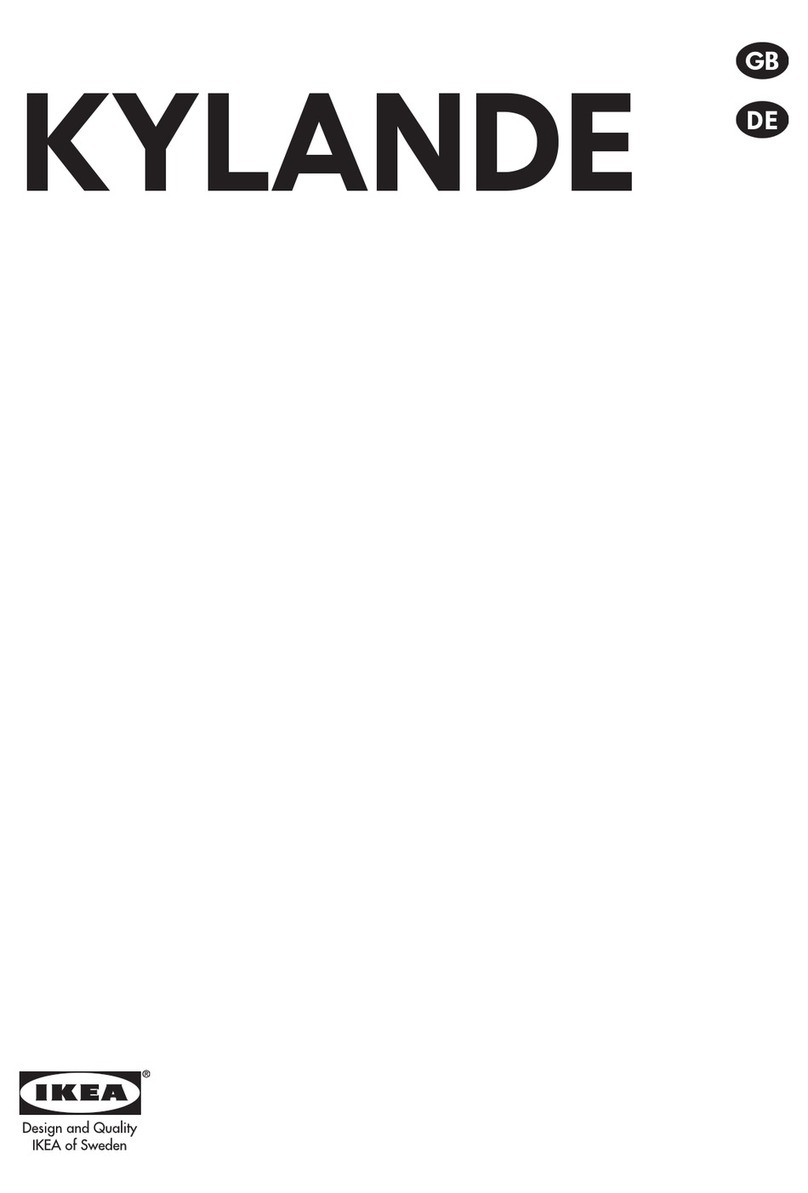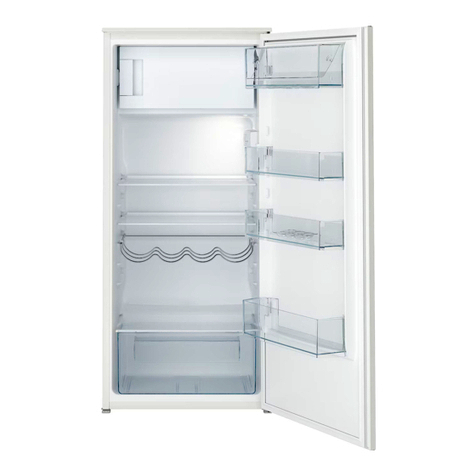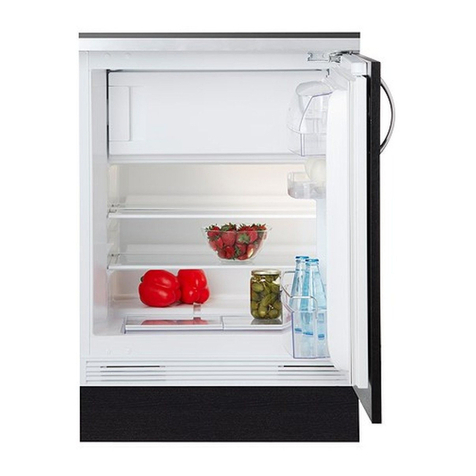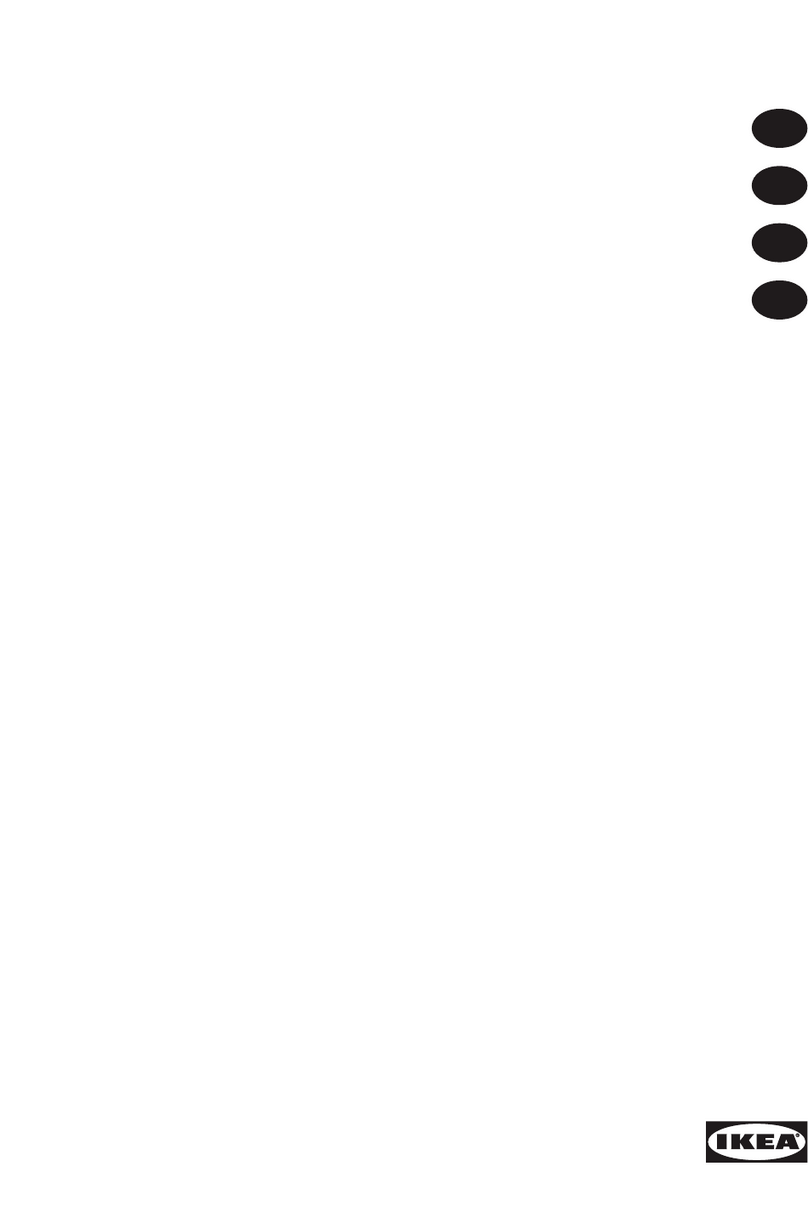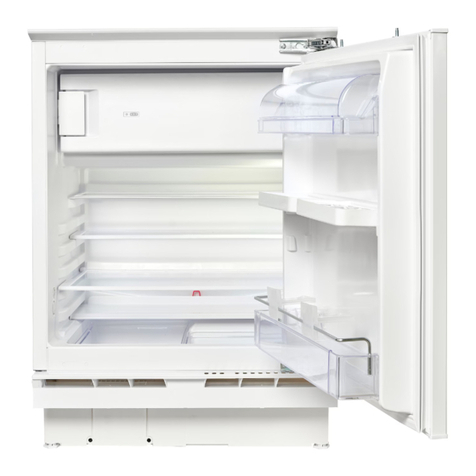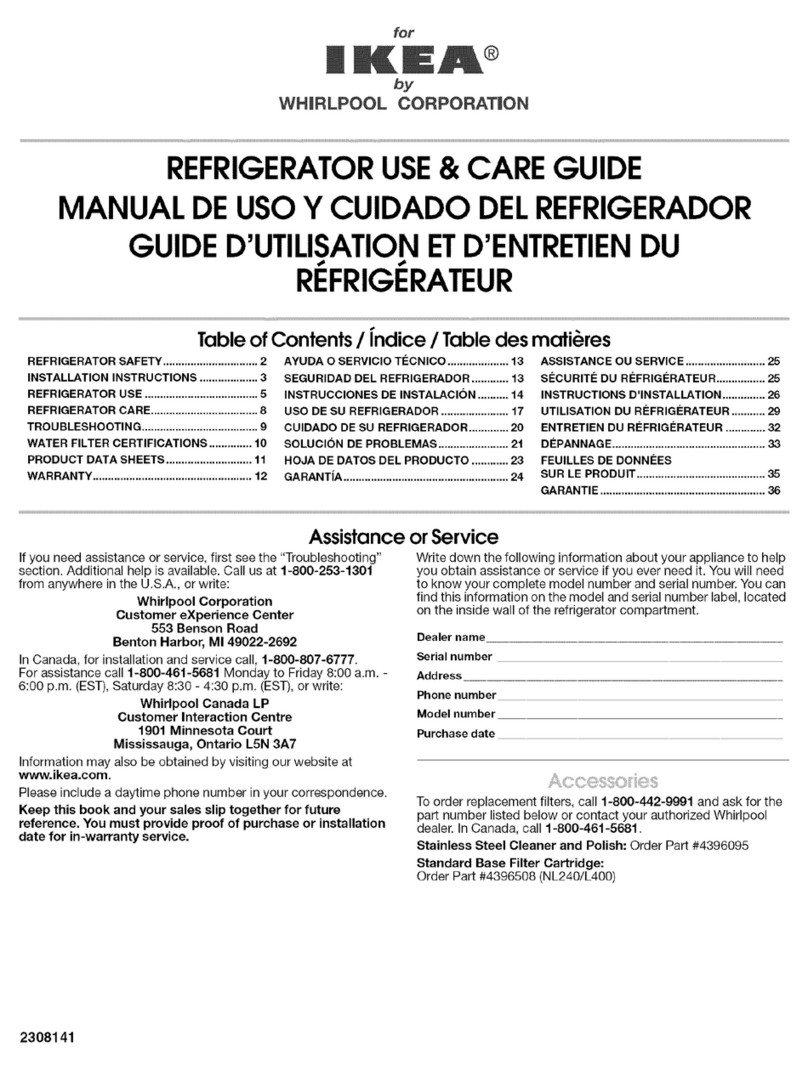
5
EN
IMPORTANT
Your old refrigerator may have a cooling
system that used CFCs or HCFCs (chlorou-
orocarbons or hydrochlorouorocarbons).
CFCs and HCFCs are believed to harm
stratospheric ozone if released to the
atmosphere. Other refrigerants may also
cause harm to the environment if released
to the atmosphere.
If you are throwing away your old
refrigerator, make sure the refrigerant is
removed for proper disposal by a quali-
ed technician. If you intentionally release
refrigerant, you may be subject to nes
and imprisonment under provisions of
environmental legislation.
• DO NOT store or use gasoline, or
other ammable liquids in the vicinity
of this or any other appliance. Read
product labels for warnings regarding
ammability and other hazards.
• DO NOT operate the refrigerator in the
presence of explosive fumes.
• Avoid contact with any moving parts of
automatic ice maker.
• Remove all staples from the carton.
Staples can cause severe cuts, and also
destroy nishes if they come in contact
with other appliances or furniture.
Destroy or recycle the carton, plastic
bags, and any exterior wrapping material
immediately after the refrigerator is
unpacked. Children should NEVER use
these items to play. Cartons covered with
rugs, bedspreads, plastic sheets or stretch
wrap may become airtight chambers, and
can quickly cause suocation.
Child entrapment and suocation are not
problems of the past. Junked or abandoned
refrigerators or freezers are still dangerous
– even if they will sit for “just a few days”. If
you are getting rid of your old refrigerator
or freezer, please follow the instructions
below to help prevent accidents.
IMPORTANT SAFETY INFORMATION
WARNING
Do not use electrical appliances inside
the food storage compartments of the
appliance unless they are of the type
recommended by the manufacturer.
We strongly encourage responsible
appliance recycling/disposal methods.
Check with your utility company or
visit energystar.gov/recycle for more
information on recycling your
old refrigerator.
• Remove doors.
• Leave shelves in place so children may
not easily climb inside.
• Have refrigerant removed by a
qualied service technician.
